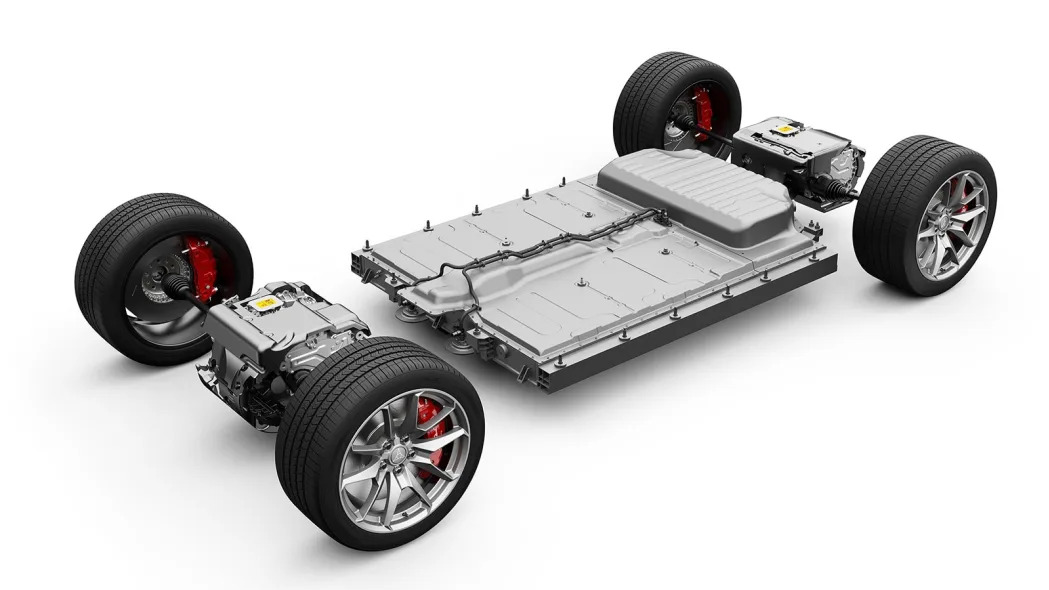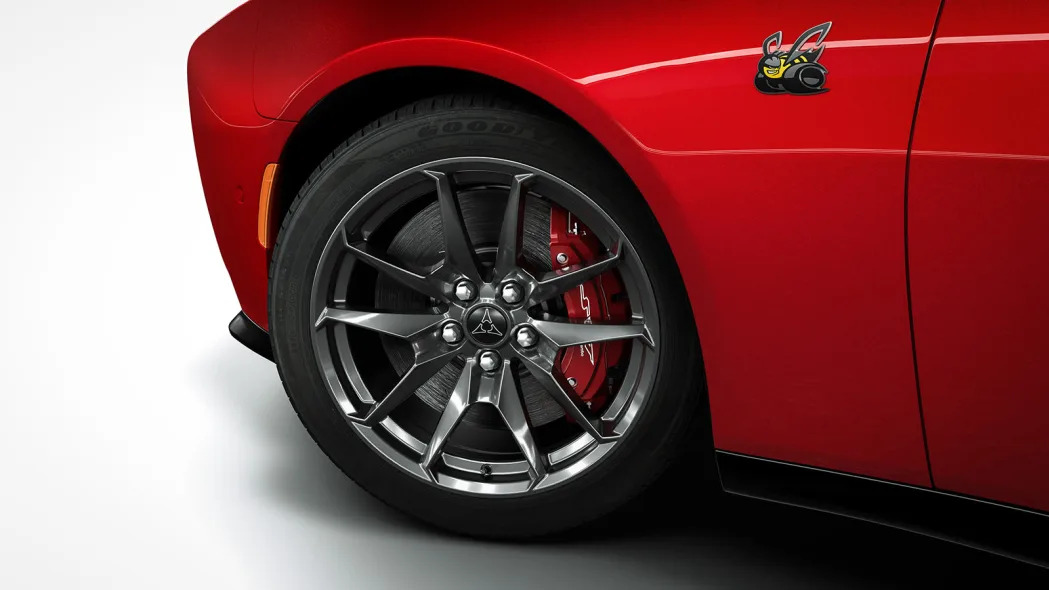2024 Dodge Charger revealed: 2-door EV this year, 4-door and inline-6 next year

After more than a year, we finally get to see the production 2024 Dodge Charger, and it looks pretty much like the concept. It’s got bigger door mirrors and door handles, plus more finished, functional lighting, but yeah, the concept made it to production pretty much unchanged, from the aerodynamic take on the ’60s Chargers’ nose to the rear liftback. Even the interior retains the same dual-screen array, pistol-grip shifter and wraparound ambient lighting. The most notable change to the interior being that the miniature forest of plastic strands has been compressed into single molded panels. But with the way the light reflects off the texture, you get a similar, and still attractive effect.
Dodge CEO Tim Kuniskis told the press that this was part of the plan, to more or less show the production car and the EV plans early to let the fans sit with it and get used to the idea. Then, hopefully, when the car was ready, so would the customers. Maybe there’s something to that, but we think just having a cool-looking vehicle speaks for itself, no matter the time between reveal and launch.
Something Dodge didn’t share at the concept’s reveal in 2022 was the four-door variant. And design-wise, it’s simply a longer version of the coupe with an extra pair of doors. Plus, it’s still got the rear hatch. The extra length (which Dodge hasn’t specified, yet) will make the four-door Charger the most spacious and practical for both people and cargo, with maximum cargo space reaching 38.5 cubic feet (though that’s only 1.1 cubic feet more than the coupe).
Also worth mentioning is that there’s a distinct difference in the upcoming gas-powered Charger Sixpack’s styling. Whereas the EVs have the “R-Wing” nose that passes air through the rectangular grille through a vent in the hood, the Sixpack has a conventional hood and grille. We’re curious what the difference in aerodynamic drag will be between the two.
We may as well cover the powertrains, now, too, since we’ve brought up the Sixpack. For the first year, the Charger will only be available as an EV, and these will all be called Charger Daytona. Two Daytona trims will be on offer first, the R/T and the Scat Pack, each with basically the same battery and motor units. They each get a pair of identical electric motors with single-speed gearboxes, each with a maximum output of 335 horsepower and 300 pound-feet of torque. Depending on the trim, the combined output is different, though. The R/T will have a maximum output of 456 horsepower and 404 pound-feet of torque, while the Scat Pack maxes out at 590 horsepower and 627 pound-feet of torque.
Note, these numbers will be with the 15-second Power Shot enabled, which adds 40 horsepower to the usual amount. There’s a 30-second cooldown time between Power Shot uses, but there’s no limit to the number of uses otherwise.
For the first year of production, Dodge will be including Direct Connection Stage Kit upgrades, gratis. So the first-year R/T will have the 40-horsepower Stage 1 upgrade, bringing it up to 496 horsepower, and the Scat Pack will have the 80-horsepower Stage 2 upgrade, bringing it up to 670 horsepower. And possibly the most important part of the equation are the acceleration times. Dodge claims a 0-60 time for the R/T of 4.7 seconds and a quarter-mile time of 13.1 seconds. The Scat Pack will get to 60 in 3.3 seconds on the way to an 11.5-second quarter-mile time. Top speed is relatively low, though, at 137 mph for the R/T and 134 for the Scat Pack.

The aforementioned Direct Connection upgrades will then be available at extra cost in subsequent model years. Dodge representatives didn’t go into detail about what is actually different besides calibrations, nor whether they would let you upgrade an R/T all the way up to Scat Pack performance. So we’ll be curious to see the full offerings and specifications of those upgrades in the near future, as well as what the aftermarket might figure out.
Connected to those motors is a 100.5-kWh gross battery pack with 93.9 kWh usable. The R/T is expected to go 317 miles on a charge, while the Scat Pack will go 260. It’s a 400-volt battery pack, but can still hit a peak of 183 kW from a DC fast charger. Dodge estimates that an 80% charge can be achieved in about 30 minutes on a 350-kW-capable DC fast charger. As for AC charging, it has a peak of 11 kW, and a Level 2 AC charger should be able to get a Charger Daytona to 80% charge between 5 and 7 hours.
You may have noticed that the two-speed gearbox and 800-volt battery teased with the concept were not listed for these cars. Those features are being saved for the SRT Banshee model that will come next year with even more performance than the Scat Pack.
Coming back to the Sixpack, it will get the twin-turbo 3.0-liter “Hurricane” straight-six that also appears in the Jeep Wagoneer line and the newly updated Ram 1500s. The name is a throwback to V8-powered Dodge muscle cars with six-barrel carburetion. Two states of tune will be available, with the standard version making 420 horsepower, and the high-output one making 550 horsepower. Both engines will be paired with an eight-speed automatic and standard all-wheel drive. But don’t worry, you’ll still be able to drift and do burnouts. There will be the ability to send all that power to the rear wheels only. The details of how this works weren’t explained, but we’re sure more will be revealed next year before it hits dealers. The same applies to chassis details on the Sixpack.
The R/T and Scat Pack Daytonas have some more specifics on their chassis. Each will feature a whole lot of tire and a whole lot of brakes. The R/T will have 275-mm wide tires at all four corners, while the Scat Pack will have 305-mm front tires and 325-mm rear tires. That means the Daytona Scat Pack will have wider rear tires than the Challenger Demon 170. Normally, the Daytona R/T will have 13.9-inch front brake rotors and 13.8 rears, and the Scat Pack will have 15-inch fronts and 14.2-inch rears. But for the first year, they all get the Scat Pack Track Pack’s upgraded brakes, which feature six-piston front calipers and four-piston rear calipers along with 16.2 inch rotors at all four corners. They will be the biggest brakes ever offered on the Charger.
As for the suspension, Charger Daytonas will use multi-link independent front and integral link independent rear setups with standard passive, monotube shocks. But the Scat Pack Track Pack gets dual-valve adaptive shocks with stiffer springs.

It has all that rubber and braking power to handle the Charger’s surprising size. In its longest R/T form, the Charger Daytona measures 206.6 inches long, more than 5 inches longer than the current four-door Charger Hellcat Redeye. The wheelbase is 121 inches, an inch more than a current four-door Charger. And at 79.8 inches wide, the Daytona coupe is 1.5 inches wider than the widebody Chargers of today. And with that 100-kWh battery pack, the Charger Daytona coupe weighs in at 5,838 pounds, more than 1,200 pounds more than the Hellcat-powered Chargers.
There are a few special features for the Charger Daytona, too. There are a variety of “Race Options” with special performance functions, including a Line Lock for burnouts; a Donut mode for, well, donuts; a Drift mode for powersliding; Launch Control for fast starts; and Race Prep, which will pre-condition the battery pack for specific needs. The last of those features has different battery temperature pre-conditioning depending on whether you’re drag racing (warmer for a shorter time) or lapping on a track (cooler than drag racing for performance over a longer period of time). Then there’s the “Fratzonic Chambered Exhaust,” which plays different sounds on the outside. And available with the Track Pack, there’s a drive recorder that will record video of the drive, audio of the interior and all the data on driver inputs, GPS tracking and other car information.
As for when the Charger will be available, it depends on the version. The Charger Daytona R/T and Scat Pack will be first, with production starting in the middle of this year. The four-door Charger Daytonas and the Charger Sixpack in two- and four-door versions will be next, with production starting in the first quarter of next year. And sometime after those will come the Daytona SRT Banshee. They’ll all be built at the Windsor, Ontario, plant. Pricing hasn’t been announced yet, but should come closer to the start of production. We’re expecting the Sixpack cars will likely have the lowest base prices when they launch, similar to the split between the Hornet GT and the plug-in hybrid Hornet R/T.
Related video:



